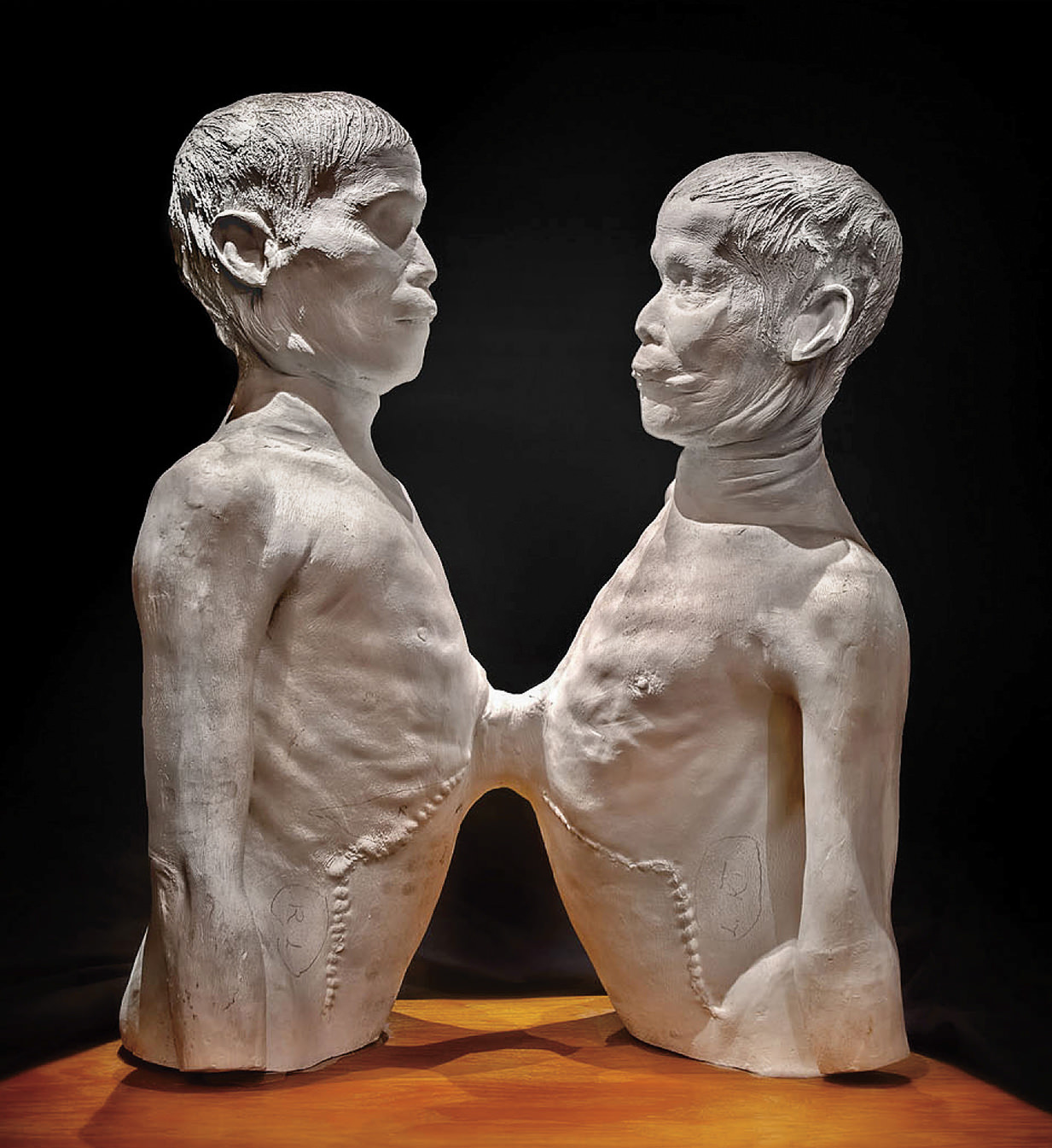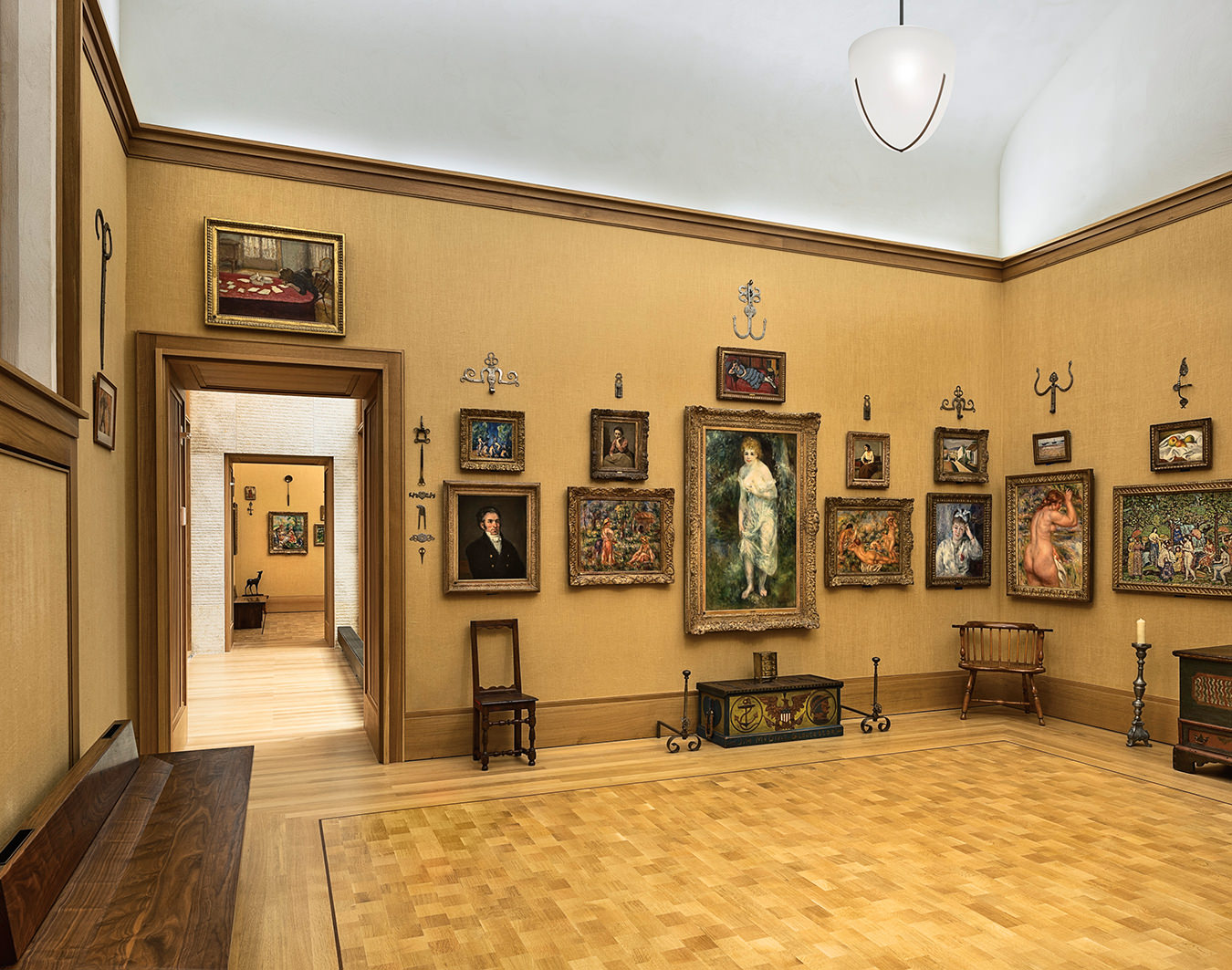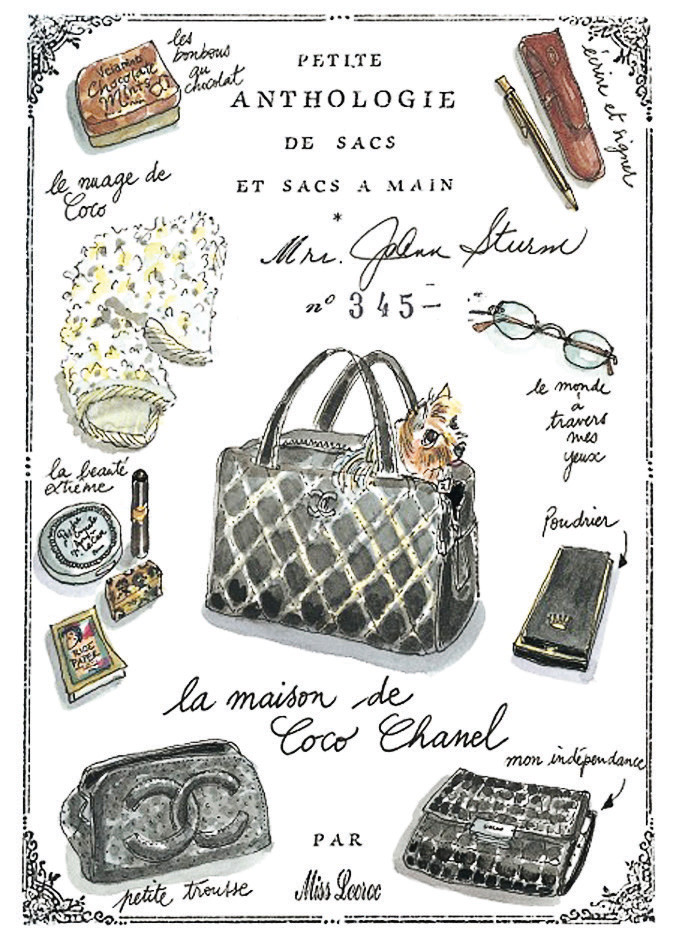-

Ron Gilad at the Tel Aviv Museum of Art.
-

RG2, 2013, made from a polished chromed steel frame, leather cover, feather padding, and a polyurethane core. Photo by Uri Grun.
-
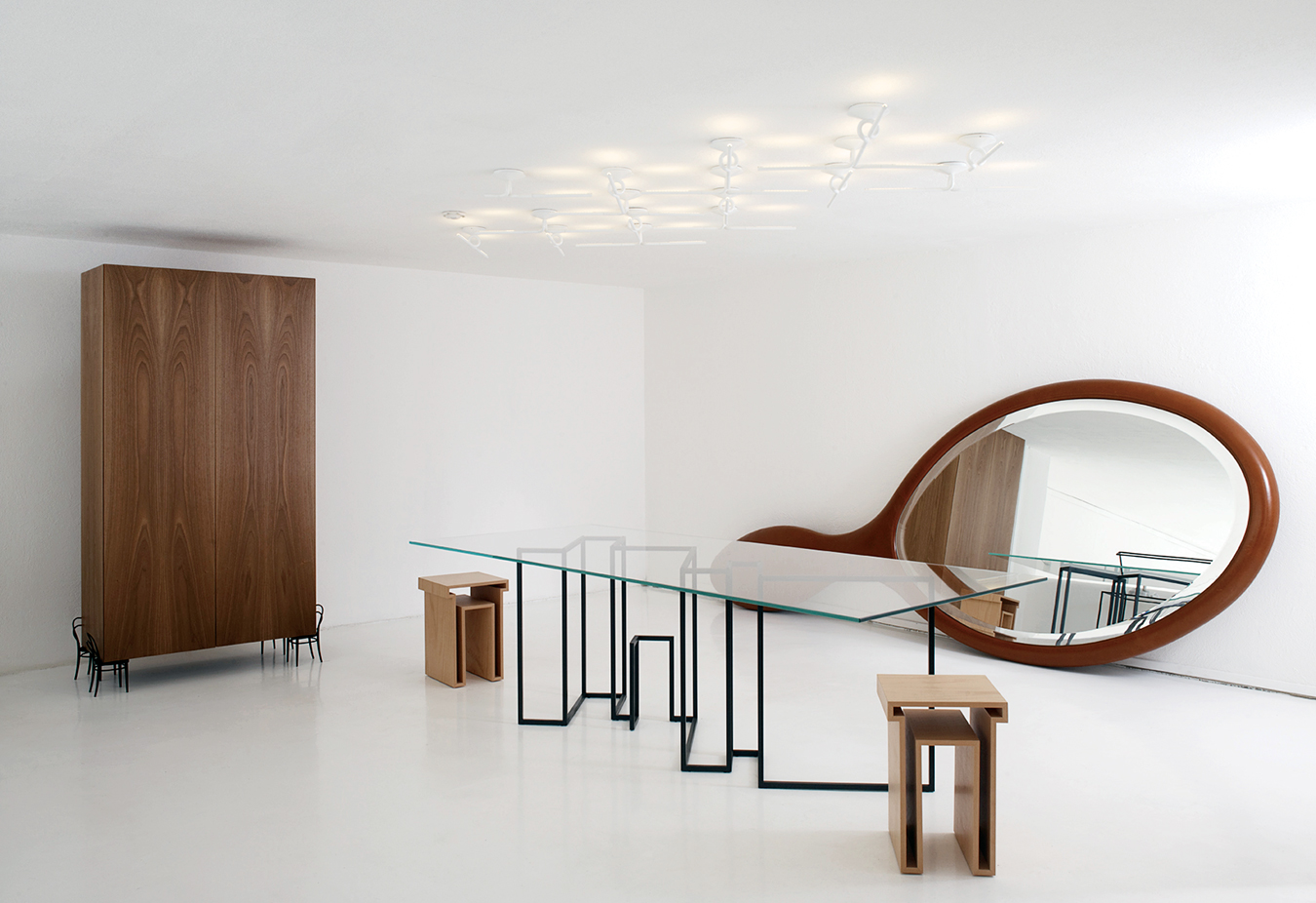
A vignette that includes Mirror X, 2011, 56 Cabinet, 2012, Void Stools, 2003, and Lightspring, 2011. Photo by Max Rommel.
-
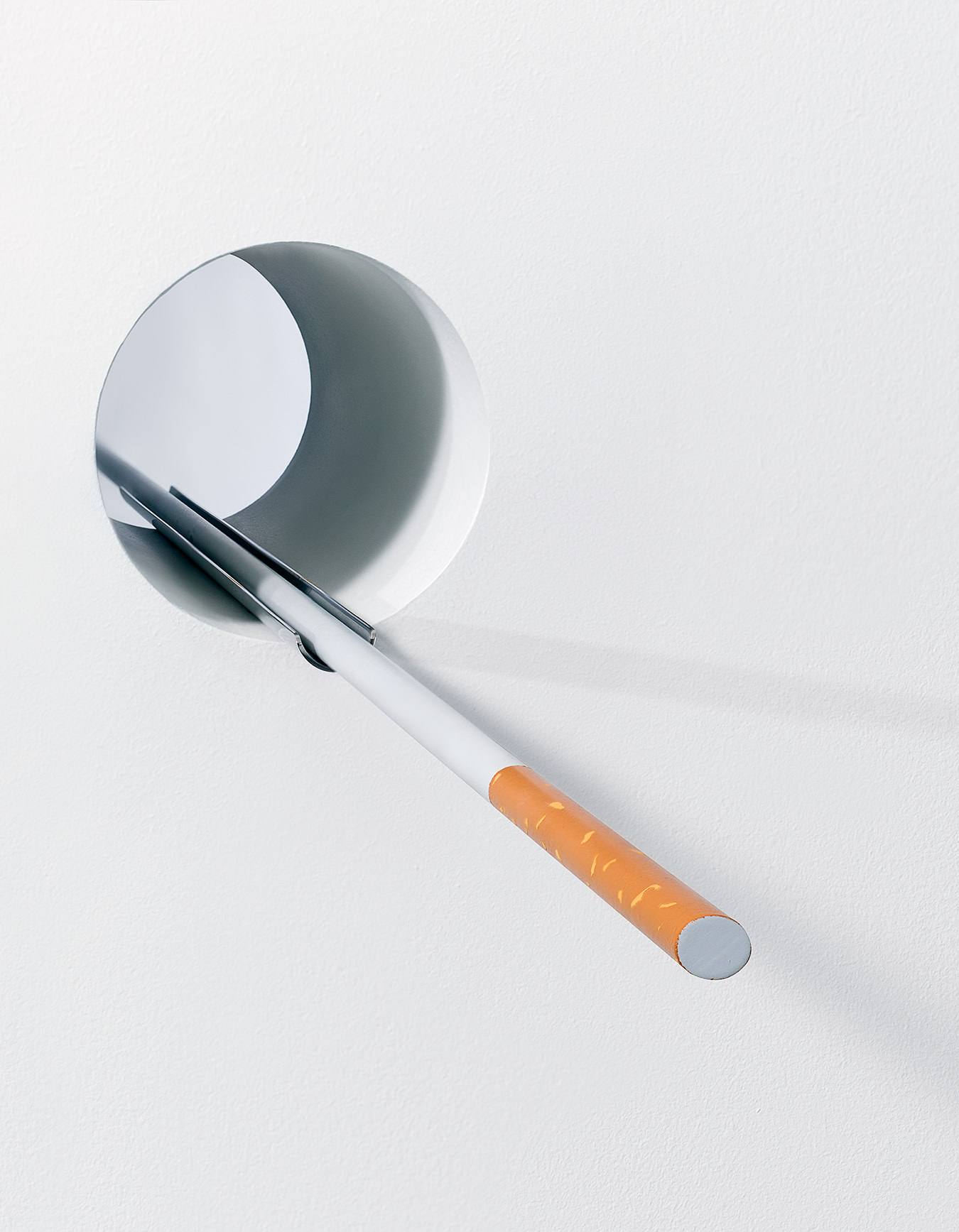
CigarettetteagiC, 2013. Photo by Uri Grun.
-
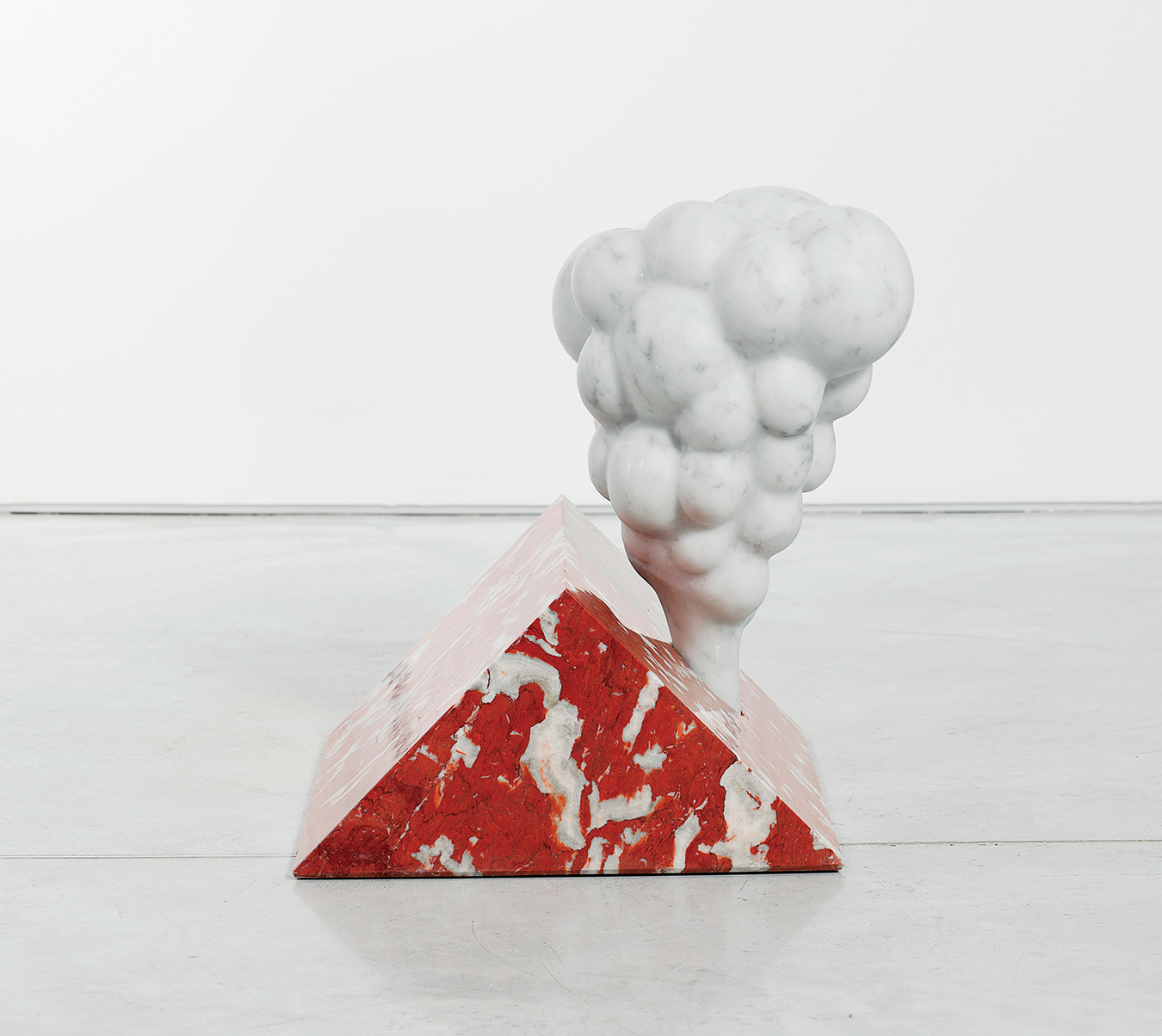
Smoking Roof, 2013. Photo by Uri Grun.
-
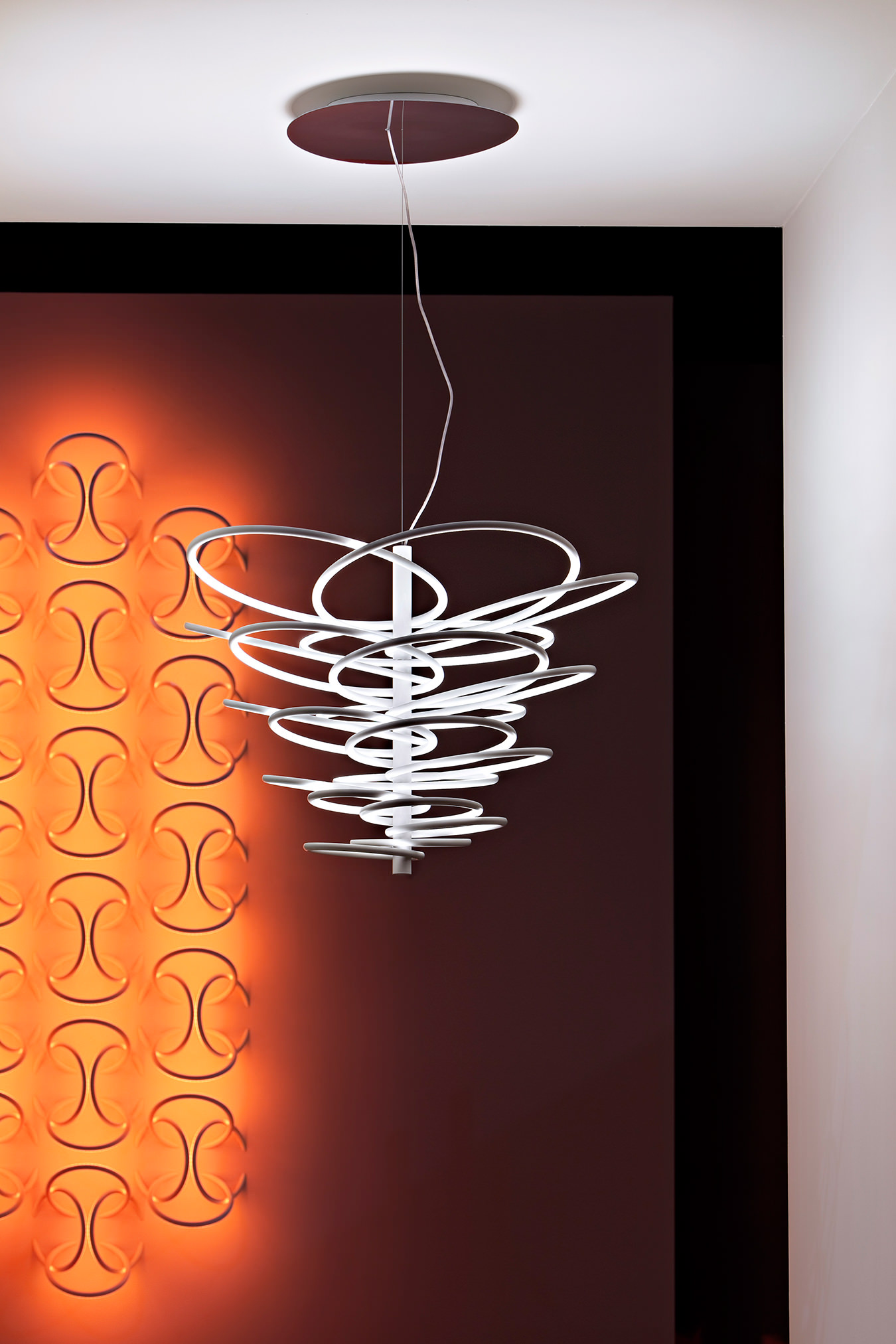
Two products designed by Gilad for Flos, including his 2620 Chandelier, 2011.
-
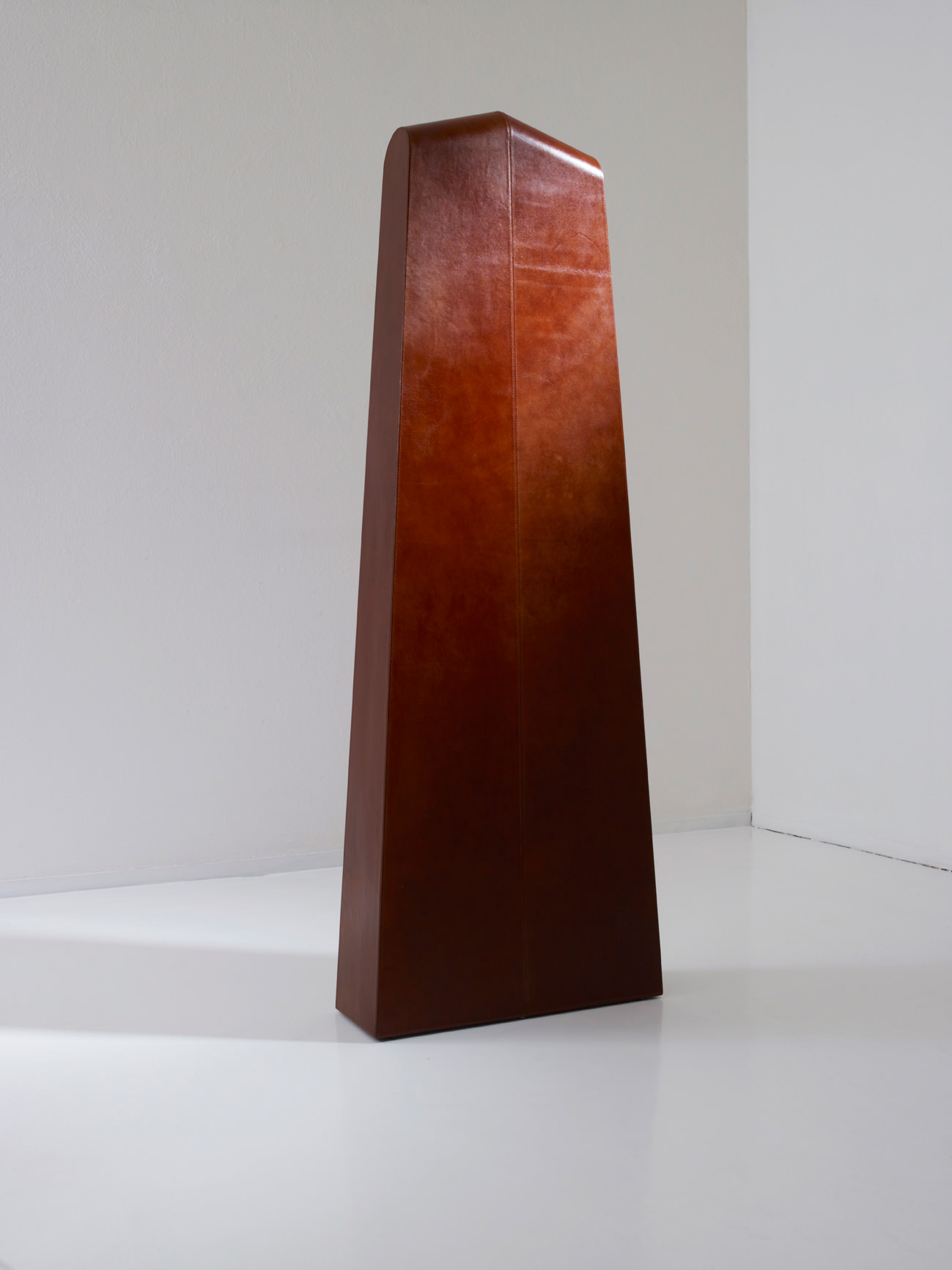
The latest in Gilad’s numbered “Butler” series; this leather-clad piece was made in an edition of 20.
-

Gilad plucks objects out of their usual context and re-purposes them. He arched a pair of doors toward each other to make Gate, 2013.
-

Birth of a Chair, 2009, made in black chromed steel.
-
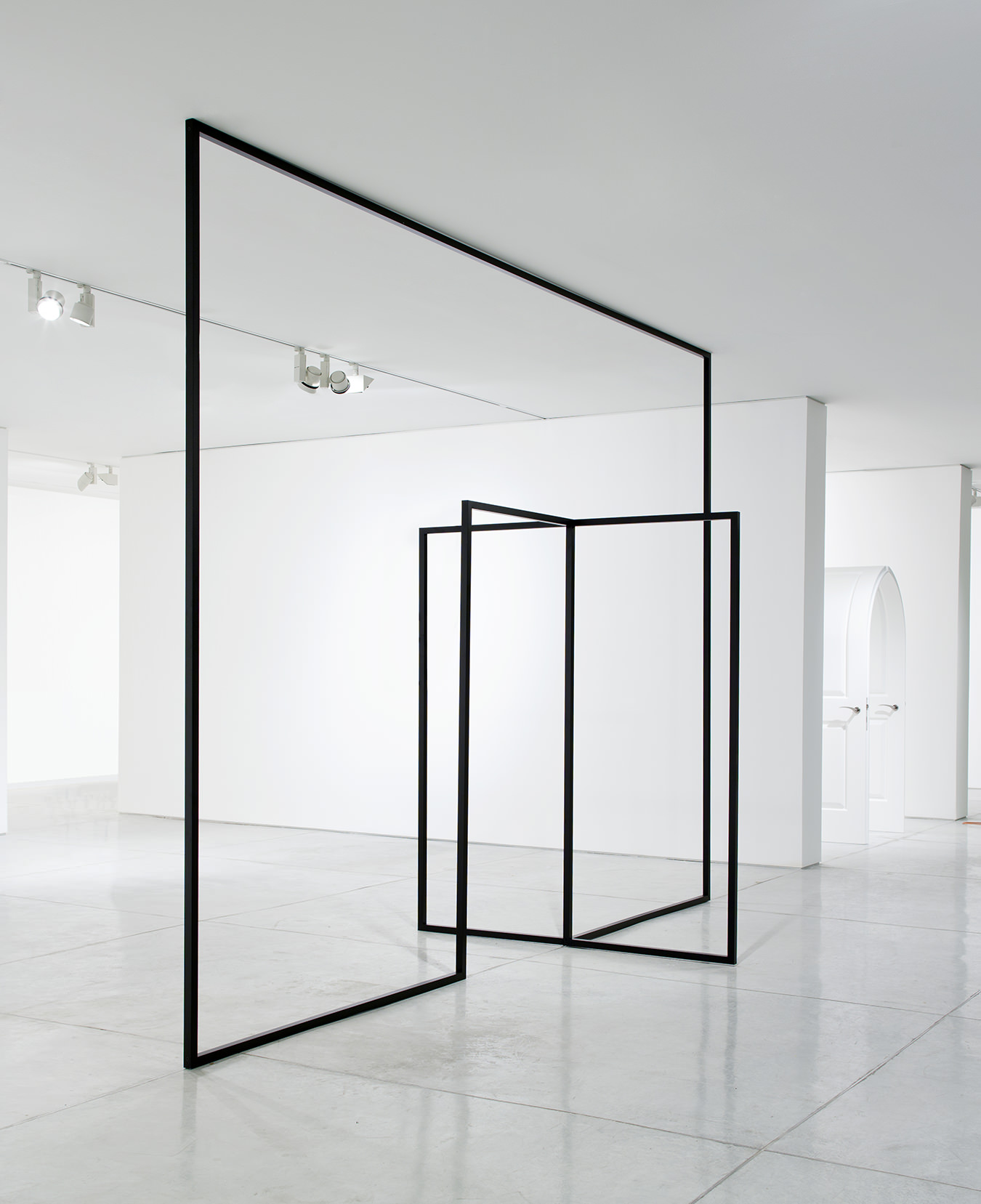
Façade No. 10, 2013, made from painted aluminum.
-

Stack of Paper, 2013, on show at the Tel Aviv Museum of Modern Art exhibition The Logical, the Ironic, and the Absurd was, improbably, made of marble.
-
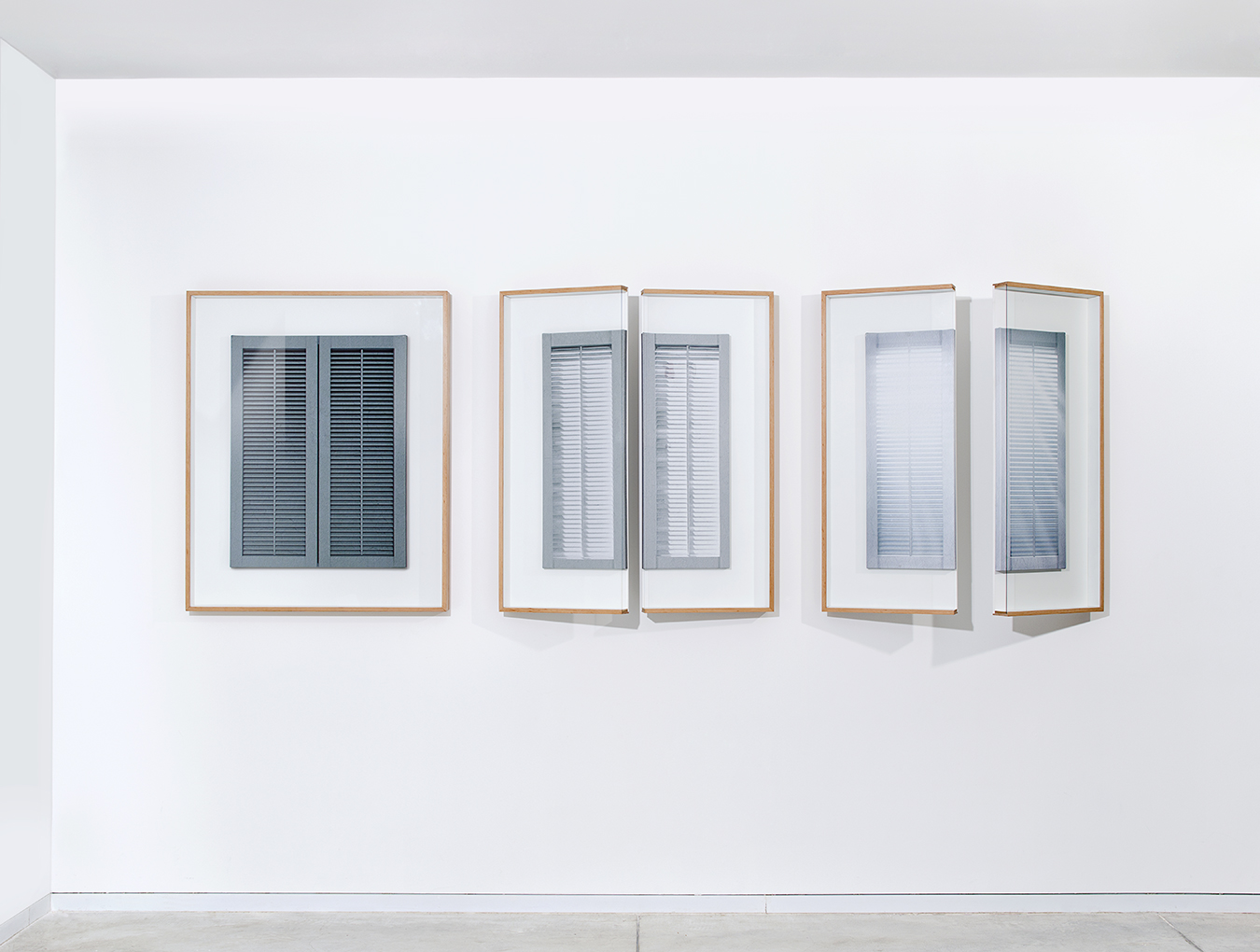
To create Shutters, 2013, Gilad painted shutters on canvas, hung them on hinges so that they open and shut like actual shutters and then framed them.
-

Swing and Smoking Roof make marble appear weightless as smoke or helium baloons, seen here at the 2013 Salvatori exhibition at the I Saloni del Mobile furniture fair in Milan.
Ron Gilad
A fine balance.
Ron Gilad is sitting under the gaze of a single glassy eye lidded with torn plaster. He has tucked a blue glass eyeball into a rupture in the studio wall behind his computer, and if you look closely enough, you can see that it is weeping clear varnish.
Walking into Gilad’s Tel Aviv studio may be as close to walking into a Magritte painting or a black-and-white Sol LeWitt exhibition as anyone is likely to get. Gilad sleeps very little and smokes a lot, ashing in the broken bellies of crystal Baccarat glasses and a scale model of a George Nelson armchair. In the morning, he takes his coffee on his lawnless front yard at a table placed on a white plinth that he purloined from the Tel Aviv Museum of Art following his prolific solo exhibition, which closed in late December. Under the violet light of a bougainvillea, Gilad has also furnished the garden in the back with a Le Corbusier couch, a pair of end tables, and a bookshelf, as if it were just another room in the two-storey house. Inside, the bright, gallery-white walls of the studio are illuminated courtesy of Italian lighting brand Flos, for whom Gilad designed the lighting system Wall Piercing, which is to the wall what an earring is to the ear. He sits in the light of a Parentesi by Achille Castiglioni and Pio Manzu, and Philippe Starck’s Lounge Gun floor lamp, too. A velvet chaise longue is borne, palanquin-style, by four miniature Thonet 56 chairs, and extraordinary objects hang from or are embedded in the walls and are taped to the windows all around.
Gilad has wavy, dark hair, a narrow face, and a tapering beard; over his hazel eyes, he sometimes wears glasses that make him look younger but still Old World and intellectual. He maintains a fine balance, however, between knowing and unknowing. Naïf or magician, he reconsiders ordinary objects and deconstructs, unknows, rescales, abstracts, and reassembles them, essentially ensuring that the viewer can no longer remain blind or indifferent to them in the face of their familiarity. Last year, at the age of 40, he became the protagonist of the retrospective-like exhibition in Tel Aviv aptly entitled The Logical, the Ironic, and the Absurd. It wasn’t a retrospective unless you mean a retrospective of themes and ideas; he designed a majority of the 110 pieces exclusively for the show in the space of less than one feverish year. The work is formally spare and conceptually rich and it wanders blithely between art and design, usually straddling both at the same time and making those who insist on making a distinction between the two appear a bit mule-headed and old-fashioned.
In recent years, Gilad has been making, among many other things, carpets for Nodus, tansu chests for Japan Creative, and lighting for Flos; he will also do a third show for Milan’s Dilmos gallery and his first architectural commission, a summer villa in Northern Italy. He is well known for designing a light now sold by Marcel Wanders’s Dutch label Moooi while Gilad was living above the Ingo Maurer shop in SoHo, New York. In homage to the lighting designer, Gilad made a chandelier from a bouquet of diverse task lights. More recently, Gilad unveiled a Flos installation called Light Dinner at last year’s Triennale Design Museum for the Salone Internazionale del Mobile furniture fair. He ranged various lamps together at a round table, where they looked like a motley collection of “characters” deep in postprandial conversation. This tends to happen a lot: Gilad’s whats start to feel more like whos.
It would seem easy to call Gilad an artist and be done with it, but he is also adept at making commercial products that start from abstract concepts and are finding success at a time when consumers are looking for a greater connection to the things they buy and live with. Advances in technology and changes in values have divided our material possessions and consumption into the cheap and disposable and those that provide value, identity, narratives, and meaning. Gilad’s tendency to start from scratch—what makes a bowl, a bowl?—and the clarity with which he draws that investigation into the product on the shelf is unique. Sometimes people call him skeptical for the way he questions simple assumptions and seemingly obvious facts about our relationship to objects, but it would be more accurate to call him willfully naive, even though it’s a funny thing to call an Israeli who spent over a decade living in New York.
In 2001, the designer travelled from his native Tel Aviv to Tribeca, where he constructed his highly conceptual objects in-studio under the name Designfenzider before beginning to explore more industrial work under his own name in 2009. Wherever he is, Gilad is literally at home in the studio. This was exemplified by his Brooklyn base; Gilad spent several of his 11 years in New York in (unlike the luminous but conventional Tel Aviv house) an open, high-ceilinged loft in South Williamsburg. There, a sweeping view of the East River and Lower Manhattan couldn’t always compete with objects born of his dark humour and whimsy: a row of shadeless tubular lamps resembled stick figures, and an ornate table was cluttered with prototypes and ringed with diverse chairs and stools, like characters in mad, Alice in Wonderland tea-party fashion. Black electrical tape marked off a section of wall filled with doodles in three dimensions, fragments of objects, and mashups like a black feather, iridescent as an oil slick, fixed to a clock mechanism that made it turn doggedly clockwise.
Ron Gilad has become deft at synthesizing abstract ideas from which he then makes a practical, minimalist product. “My work almost always starts from a function, the relationship between an object and a user,” he says.
Perhaps in part because he is constantly questioning his own (and our) assumptions, busy perceiving many possible answers, Gilad is reluctant to give one himself. Perhaps straight answers aren’t possible if privacy is a shrinking sandbar as success encroaches. Many of his belongings are still packed in boxes around the Tel Aviv studio. He’s not sure at the moment if he can call any place home, so he protects the home in his head.
To create the recent six-month Tel Aviv show, curator Meira Yagid-Haimovici worked closely with Gilad, whom she has known since the mid-1990s, when he decided to leave the industrial design program at Jerusalem’s Bezalel Academy of Arts and Design without bothering to graduate. While the local design community was finding its feet, exploring improvisation and materiality, Gilad was already confounding that notional line between art and design. Visitors to last year’s exhibition, according to the designer himself, were probably overwhelmed at its breadth. He turned marble into smoke and sheets of A4 paper. The painting of a projector on a piece of stretched canvas actually projected the image of a white cube on the facing wall. He hung a frame from the wall that contained only the nail that the frame should hang on. A glass house put its occupants on display, another had two vanishing points. Through Gilad’s lens, everything is a construct or a convention that we choose to be safely trapped in. He placed one of the gallery guards’ chairs beneath a halo-shaped cathode light, and another, a Thonet 56, on a short plinth; even the guardians of the art themselves became part of Gilad’s relentless interrogation of things.
Around 2009, while still in New York, Gilad developed relationships with family-owned, almost exclusively Italian design manufacturers in a patron-like, Renaissance-era, de’ Medici fashion. For a time, pursuing this antique and highly personal working relationship over all others meant famine instead of feast, financially. As Adele Cassina and others took Gilad under their wings, it turned decidedly to feast, so much so that he decided to return to Tel Aviv in late 2012 to abbreviate what had become an increasingly frequent commute to Milan. The highest-profile of his patrons is Flos president and CEO Piero Gandini; it was for Gandini that Gilad made Wall Piercing, an eminently simple, halo-like light built into the architecture of the wall that, when mounted in numbers, becomes radically ornamental. As these relationships developed, his focus on conceptual design split and spliced between art and industry. Partly because each was nourishing the other, he began to produce art-inflected commercial products as much as functional art. There was a collection for Molteni&C that played with refracted light, colour, and transparency; candlesticks for Established & Sons; a series of soft (looking) marble pieces for Salvatori; and an exhibition entitled The Line, the Arch, the Circle and the Square at the Dilmos gallery in 2012. Here, he outlined elements of his design process, revealing how he tries to limit himself to using only, say, a line or a dot to create expressive, thought-provoking, and eventually commercial pieces from the most Platonic of elements—a line of steel seemed to evolve into a wall-mounted candle holder as it replicated itself, curling more and more as it crosses the gallery wall (looking for all the world like the classic Ascent of Man image).
“Working between Tel Aviv and Milano, and unique pieces and mass-produced pieces, having this freedom, is a very big thing for me,” Gilad says. He’s convinced that he wouldn’t have moved into mass production if he hadn’t been tinkering with concepts in the studio for so long, and that these industry leaders wouldn’t have sought him out if his ideas weren’t first acted out on a non-industrial stage.
Gilad has become deft at synthesizing abstract ideas from which he then makes a practical, minimalist product. “My work almost always starts from a function, the relationship between an object and a user,” he says. “It doesn’t come from nowhere. I don’t invent a new function. A fruit bowl is a fruit bowl—we already know it.” He doesn’t think, a bowl is a round thing that contains something; instead, he works to pare away his accumulated ideas of what a bowl should look like and then to add nothing. The result of the fruit bowl exercise was “bowls” that are made up of only slender metal bars that form the outline of a container—function alone accounts for its looks. Likewise, his VaseMaker consists of a porcelain tile that supports the flower’s stem, which the user may then pair with any vessel that can hold water. “I’m not inventing any new shapes, any new formats. It’s just a matter of how you think and how you translate it, good or bad, into an object,” he explains. “It’s another way of seeing, thinking, and developing things—not just shaping them.”
Gilad is working toward a third show at Dilmos during April’s Salone Internazionale del Mobile and a September exhibition in Brussels. The show for Dilmos will include mirrors, which now lie at the heart of a new body of work. “The idea is to play with layers of reflections and with point of view,” he says. “It’s not anymore about just standing in front of a shining surface and looking at your reflection. It’s more than a selfish function. In fact, it’s not about seeing yourself at all, but the space around you or the person standing to your left.”
For most people, seeing this way is a discipline and an asceticism, not a native frame of mind. And so it is for Gilad. The purposeful unknowing that he practises is more creative than conventional approaches, but it isn’t just a fiction: it is a demolition and reconstruction, an inventive invention. “I’m trying to blur something in order to not understand, to be in a place where I’m confused or confusing the user of my work. It’s a childish habit: you do the opposite of everything people tell you to do. I force myself to stay, in my mind, like a child,” Gilad says. “Almost naively, I ask the question, why is it like this?”


